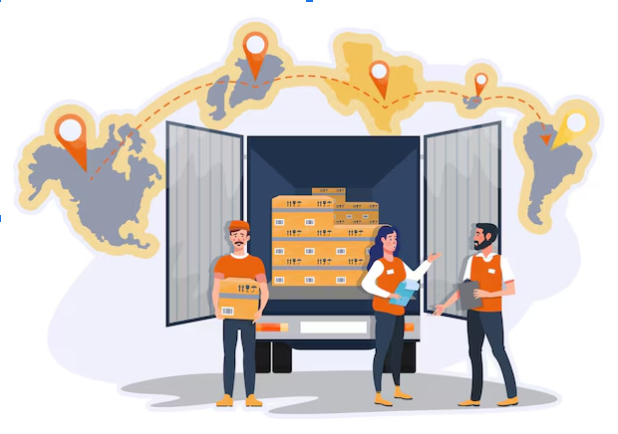Whereas customs clearance is an important phase of international trade, different countries have varying legal and regulatory requirements for the entry and exit of goods. The detailed understanding of the customs clearance process will help importers/exporters avoid unnecessary delays and extra costs, eventually synchronizing with the logistic chain as a whole.
What is Customs Clearance?
Customs clearance refers to the importation or exportation of goods that have been cleared by customs. It is affected by the submission of documents that are required in customs, directives for payment of customs duty, and fulfilling available regulations to have a valid reason for entry or exit. This process will protect the country from prohibited items, and check the right levy of taxes and duties.
Key Steps in the Customs Clearance Process
1. Arrival of Goods and Calling of Vessels
Once the shipment arrives at an Indian port or airport, it is the carrier’s( under the airline or shipping line’s account)who calls the vessel at the customs location. In this first step, the participation of the importer himself may not be necessary.
2. Filing Import General Manifest (IGM)
The importer or the carrier has to file an electronic import general manifest, mentioning all the details of the arriving goods, which is of vital importance to keep track by customs authorities.
3. Goods in Custody of the Custodian
Goods are kept in the custody of an authorized person until customs clearance is completed upon arrival. The custodian is responsible for ensuring goods are unloaded only at the place designated and under proper supervision.
4. Filing the Bill of Entry
An importer has to file a Bill of Entry electronically. In this document, a detailed assessment, according to the rate at which goods attract duties and taxes depending on their nature, value, and rate of exchange, is made. It therefore follows that it is a self-assessment system in which an importer computes the duties payable.
5. Goods Inspection and Clearance
The customs may verify the information declared physically. After the inspection is witnessed to be complete, the goods are cleared for release, and the importer proceeds to deliver the same.
Types of Customs Duties in India
Several kinds of customs duties and fees may apply when importation is concerned. A brief overview of some common charges you are likely to have to deal with is highlighted below:
- Basic Customs Duty (BCD): It forms the principal tax on all types of imported goods. However, the rate for different product categories varies from very low to very high.
- Countervailing Duties (CVDs): This is the duty charged on products that are subsidized in the country of export. The purpose of this is to make a playing field even for the domestic producers.
- Anti-Dumping Duty (ADD): To provide protection to the domestic industries when goods are imported below the fair market value.
- Social Welfare Surcharge (SWS): This is a surcharge duty, which is usually 10% of the assessable value of Basic Customs Duty. It provides social welfare programs with financial support.
- IGST: Integrated GST is the type of value-added tax that is levied on imported goods. The whole value of the goods is the tax base, the sum of the CIF or Cost Insurance and Freight with customs duty and other charges that are applicable.
Essential Documents for Customs Clearance
Proper documentation is very important in facilitating customs clearance. The documents that you will need to have in order include the following:
- Bill of Entry: In case of imports or Shipping Bill in case of exports, these are the documents that contain due declaration in detailed form about the description of goods exported or imported.
- Commercial Invoice: This will outline the transaction; in some cases, the description, quantity, and value of goods.
- Packing List: It shows the packaging information, like the number of packages, weight, and dimensions, which helps the customs officials verify the shipment contents.
- Bill of Lading or Airway Bill: Evidence of shipment, showing details about the consignee and consignor, with descriptions of goods.
- Import/Export License: According to the nature of the product or destination, there may be an issuance of an import/export license on the exportation of certain regulated goods.
- Certificate of Origin: It shows the country of origin, which may determine the applied duty rate.
- Insurance Certificate: Provides evidence that goods are covered by insurance during transportation against loss or damage.
Additional Charges in the Customs Clearance Process
Apart from the regular customs duties, there are a number of fees and charges an importer may be liable for:
- Customs Handling Fee: This is usually 1% charged for processing and handling the customs documentation.
- Demurrage Fees: In the event that goods are not cleared in time, then one is bound to pay additional storage fees. These are greater when there is a longer delay.
- Brokerage Fees: Customs brokers charge a fee for the handling of the entire process of clearance, their documentation processing, and liaison with customs officials.
- Amendment fees: For any wrong documentation presented, there are amendment fees charged by the customs.
Tips for Smooth Customs Clearance
1. Make Accurate Documentation
Ensure all documents are completed correctly and submitted on time. Documentary errors will lead to long delays and additional costly expenses.
2. Know the Duties and Taxes Applicable
Know the types of duties applicable to your goods: Basic Customs Duty, IGST, and Social Welfare Surcharge. The correct understanding of these charges helps in budgeting for the same and avoids surprises.
3. Engage an Efficient Customs Broker
This can be made easier by engaging the services of a customs broker or freight forwarder.
4. Prepare for the Inspections
Some shipments are liable to be physically inspected. Please make sure that the goods you send are properly matched with the description and details you declare to avoid any delay.
5. Develop a proactive relationship with the customs authorities.
Respond promptly to customs officials’ questions. Communication that is clear and proactive will help to expedite the process and avoid issues when they arise.
Endnote
Any business involved in international trade requires detailed knowledge of the minutest details regarding customs clearance charges. After all, from preparing adequate documents to considering different types of duties and various fees, everything is an elaborate process. The more aware you are with customs clearance proceedings coupled with better record-keeping and using experienced brokers, the less problematic and easier it would be.



